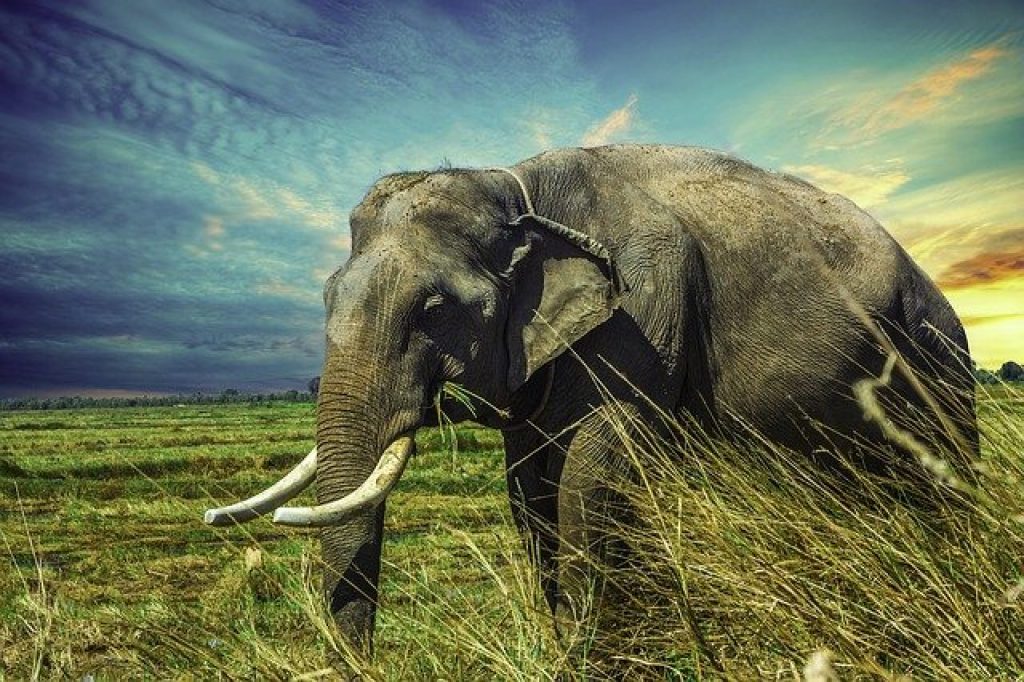Richard got a DSLR camera as his birthday gift. He was super excited and started taking photos of his surroundings. After that, he shows these photos to his father. His father said that some of them are truly amazing, but some framing isn’t perfect at all.
Richard was a little bit surprised, he never knew about the framing of photography. So he wants to know about framing to take perfect photos all that time. Then his father discussed in detail along with taking photos using various framing techniques. Richard found it so interesting and tried it on his own.
Now, what is the framing in photography? Have any ideas? If don’t, keep reading this article. You will get a crystal clear idea about photography framing techniques.
What is Framing in Photography?
In a particular picture, all subjects are not equally important. Framing is a photo composition approach to draw focus and understand the context of the photo. The main objective of framing is to gain the attention of someone’s eyes to the main subject blocking other minor objects of the image.
Various types and elements are utilized to frame an image properly. Mainly, framing is a powerful technique to make a photo more visual and attract viewers to the primary subject. It helps to understand the emotion of the photo and creates depth in the image.
Besides, the viewers will get different viewpoints and make the picture more interesting and informative. So far, photographers use framing not just for focusing on the main subject but also to make it meaningful along with its surroundings.
Why Use Framing in Photography?
Framing is important in photography to make an image attractive and contextual. Several reasons are responsible for the development of frame techniques in photography. So now we are going to discuss the main reasons to incorporate framing in photography. Let’s dive in:
Focus The Main Subject
The main reason behind the framing concept is to focus on the primary subject to direct the viewer’s eyes to it. As all subjects are not vital in one photo, framing controls the viewer’s eyes where they need to be focused. This approach also emphasizes and isolates the subject of any photo to gain viewers’ attention.
The concept is like hanging a photo frame on your wall. The frame makes the photo more distinct and meaningful. Also able to attract someone’s eyes to this specific photo frame easily that a photo without a frame can’t.
Create Depth
For drawing the attention of the viewers, the image should have depth. That will create an illusion with eyes and mind. The framing approach adds layers, light shades as well as 3D feelings.
For example, you might take photos of trees, houses, fences, people, pets, doorways, branches, tunnels by highlighting your subject focus. Framing will add depth to the focused subject. Hence, your photo gets depth from front to back.
Balance
Proper framing will maintain the balance between positive and negative space. That will help to get the attention of the viewers to the focused element of the image.
Provide Context
Every photo tells a specific story. Framing helps to understand the context of an image by focusing and adding more depth. The viewers get the point of view as well as the meaning of the photo. For example, you can easily understand that a photo defines the spring season by seeing a branch of cherry blossom image.

What Are The Types Of Framing in Photography?
The framing technique in photography isn’t one type. It’s a set of techniques, you need to apply the suitable one to multiple types based on your subject, orientation, location, and other dependent factors. There are various types of farming approaches used to make a photograph more focused as well as contextual.
The types of framing in photography are as follows-
Natural Framing
The most common and widely used framing type is to use natural elements. You can find a perfect and beautiful frame in between the natural environment. For example, mountains, trees, leaves, birds, flowers, stones, deserts, rivers, oceans, and so on.
Each element creates a specific context with marvelous beauty if you can focus and extract the meaning of the subject.
Again, weather conditions are also great for creating interesting frames. In foggy weather, you will get a winter vibe. Similarly, rain and snowfall will help you form amazing frames.
Geometric Framing
Geometrical shapes can be used for framing a photo. But make sure they make sense of completeness like square, circle, rectangles, triangle, etc. It will be more obvious when you use geometric shapes around your main object.
For example, you capture a flower surrounded by a circle shape. The shapes will attract the viewer’s eyes easily onto the primary subject. Hanging around or square frames on a wall is kind of similar to this concept. That will make a photo more visual and attractive to the viewers.
Architectural Framing
Using architectural elements like buildings or elements of the building can form a great frame as well. It will provide an urban flavor to your picture. So that viewers can easily understand the concept of the particular image.
As for the architectural elements, photographers use doors, windows, arches, floors, walls to get someone’s attention. These elements can create attractive frames forming instantaneous openings where viewers need to be focused on the taken image.

Light and Shadow Framing
You can form subtle and soothing frames by focusing on lights and shadows. It’s quite hard to use the effect of lights and shadows properly. Both natural and artificial lights can be used for framing. It’s similar to the shadows of the subject.
Make sure the subject is the main focus. Frame with proper brightness, hue, and saturation will make the photo more interesting and attractive. 2 factors are addressed for lights and shadow framing such as:
First, you can focus on the primary subject and focus on it using the ray of light. In this situation, the shadow of the subject is not much important to consider. The focus of the light will be able to draw the attention of the viewers.
Secondly, you can focus on the shadow of the subject to hide the less important or irreverent surroundings. Besides shadow, the subject should be focused using proper lighting space. The illusion of light and shadow will automatically attract the viewers to the subject.
Body Framing
This approach is called model photography as well. Also the properties of the human body like hair, hands, clothes, etc are included in this type of framing.
Props Framing
In case if you don’t find any framing elements, then you can go for props framing. For example, you can use rings, accessories, mirrors, food items, even jewelry, or anything else you have. Hence, you can create amazing frames by using such types of props. Eventually, all of the elements of the world can be considered as frames. It depends on the context of the composition.

How Do You Use Framing in Photography?
When you have enough knowledge about the frame type and element, it will be easier to apply in your photography. To make a perfect frame, you should concern about the following things –
- First, you have to choose which are the primary subjects and which are the secondary. Because the main subject of the frame draws the attention of the viewers. If there is no subject available then create it yourself using props.
- Then you should decide the context of the image and what your photo tells the audience. Also, find out why and how the subject attracts someone!
- After that, you have to place the subject at the center of the frame to take a perfect shot. Also, you should keep in mind the angle of the subject. In this case, you can change the position to get the best frame.
- You can mix and match several types of subjects. The moving and multiple framing are advanced approaches for photography framing. They will add more depth and context to an image.
- Besides, you should coordinate the setting of your camera as well for better composition. Again, a perfect shot depends on the proper distance of the camera, subject, and frame.
So far, the framing technique is fluid in photography, no specific rules are fixed. You have to do it perfectly with continuous practice and observation.
Final Verdict
Now it’s time to wrap up the content. The importance of framing in photography can’t be described in one sentence. To attract someone’s eyes to your captured image, framing is necessary.
When you need to focus on a subject, add depth, and create a strong photo, framing is a must. As a photographer, you have to learn proper framing techniques. The perfection and context are mainly dependent on the framing approach.
We already discussed the framing types, elements, and ways of framing. Hopefully, you can understand why and how farming is used as well as its importance of it in photography.
